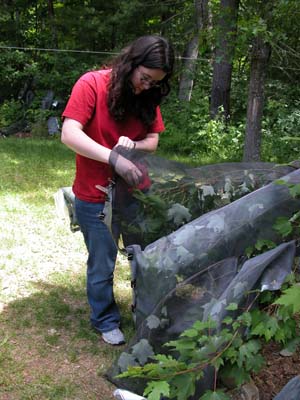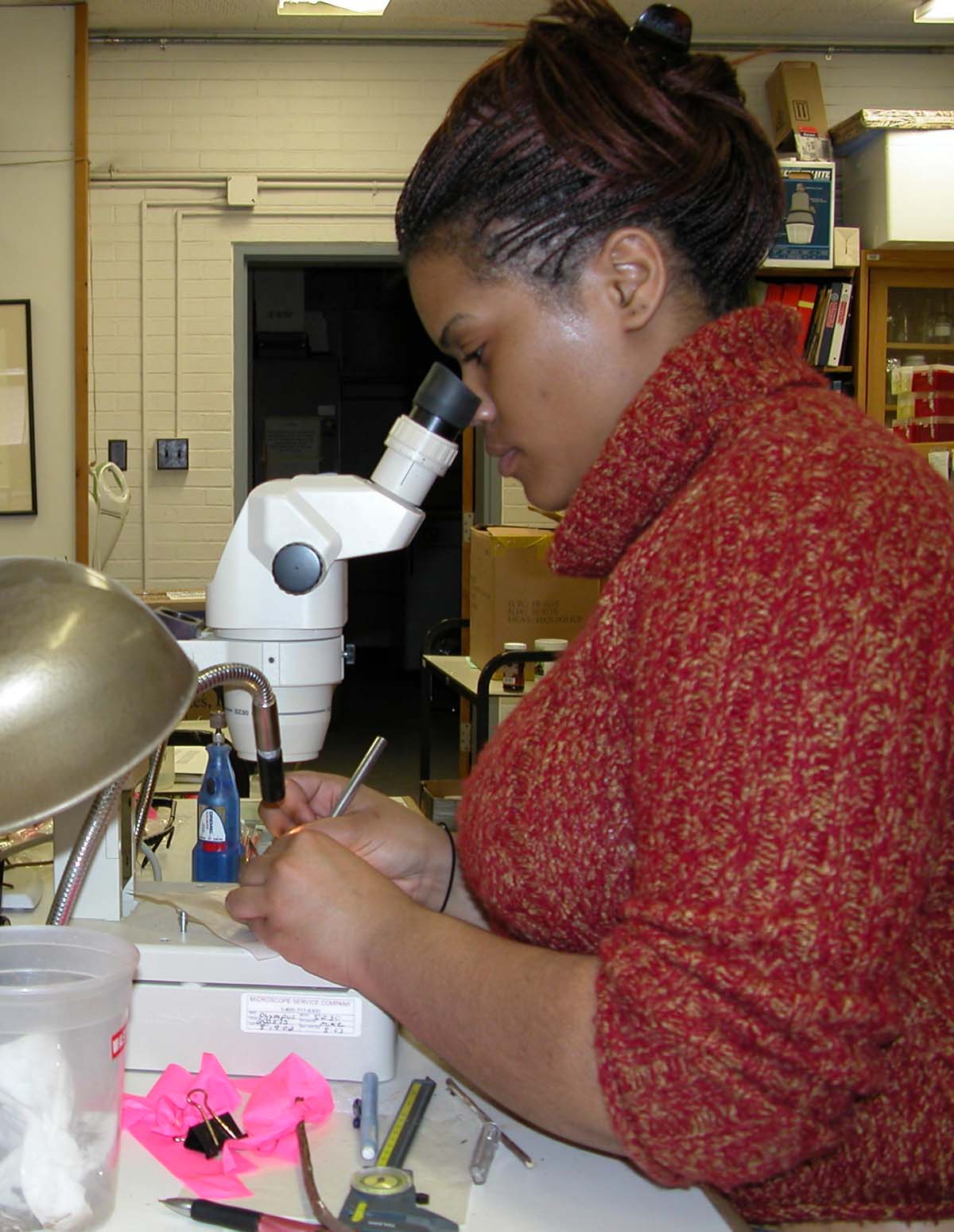|
 |

| Paternal inheritance of mitochondria |

 This project begun by two UCONN undergrads in collaboration with Chris Simon and John Cooley promises to yield exciting new data. In June of 2004 we set up experimental matings between the 17-year periodical cicada species Magicicada septendecim and M. cassini. We currently have hybrid 17-year cicada nymphs (juveniles) that will be four years old in August of 2008. We are monitoring the population to determine if paternally inherited mitochondrial DNA (mtDNA) that was detected in the one-year-old nymphs is still apparent years later. In non-hybrid crosses, paternal mtDNA is believed to be destroyed during development, but in hybrid situations, paternal mtDNA has been found. Two previous undergrad researchers, Kathryn Gannon (now Fontaine) and Kashiwa Hereford, began this research. Kathryn helped to collect the cicadas, mated them in captivity, and determined mating success of various hybrid crosses. She and John Cooley developed a PCR assay to detect the mtDNA of both parents and using this they discovered paternal leakage of mtDNA in the hybrid crosses. Kashiwa Hereford dissected hybrid and control egg nests to monitor hatching success. She discovered that the eggs of some crosses were much more successful than others. This work can also interface with our NZ cicada work described below. One paper is in progress and the other published:
This project begun by two UCONN undergrads in collaboration with Chris Simon and John Cooley promises to yield exciting new data. In June of 2004 we set up experimental matings between the 17-year periodical cicada species Magicicada septendecim and M. cassini. We currently have hybrid 17-year cicada nymphs (juveniles) that will be four years old in August of 2008. We are monitoring the population to determine if paternally inherited mitochondrial DNA (mtDNA) that was detected in the one-year-old nymphs is still apparent years later. In non-hybrid crosses, paternal mtDNA is believed to be destroyed during development, but in hybrid situations, paternal mtDNA has been found. Two previous undergrad researchers, Kathryn Gannon (now Fontaine) and Kashiwa Hereford, began this research. Kathryn helped to collect the cicadas, mated them in captivity, and determined mating success of various hybrid crosses. She and John Cooley developed a PCR assay to detect the mtDNA of both parents and using this they discovered paternal leakage of mtDNA in the hybrid crosses. Kashiwa Hereford dissected hybrid and control egg nests to monitor hatching success. She discovered that the eggs of some crosses were much more successful than others. This work can also interface with our NZ cicada work described below. One paper is in progress and the other published:
-
Fontaine, K.M., J.R. Cooley, C. Simon. 2007. Evidence for Paternal Leakage in Hybrid Periodical Cicadas (Hemiptera: Magicicada spp.). PLoS ONE 2(9): e892, 1-8. doi:10.1371/journal.pone.0000892
We are looking for an undergraduate student who would like to learn to clone and sequence DNA from our Storrs population of growing cicada nymphs. Cloning would allow the categorization of multiple types of mtDNA that might be present in single individuals (i.e., not all mtDNA sequences in a single individual are expected to be identical because factors such as aging, nuclear copies, paternal leakage, and to a lesser extent PCR error are known to occur). The study of nuclear-mitochondrial DNA interactions is an active area of research in molecular evolutionary studies. This is a project that is guaranteed to produce interesting results. There are also important natural history facts about periodical cicada nymphs that are unknown, such as whether the juveniles move underground. This can be tested by comparing nymphs inside and outside of our experimental plots.
|
|
|

